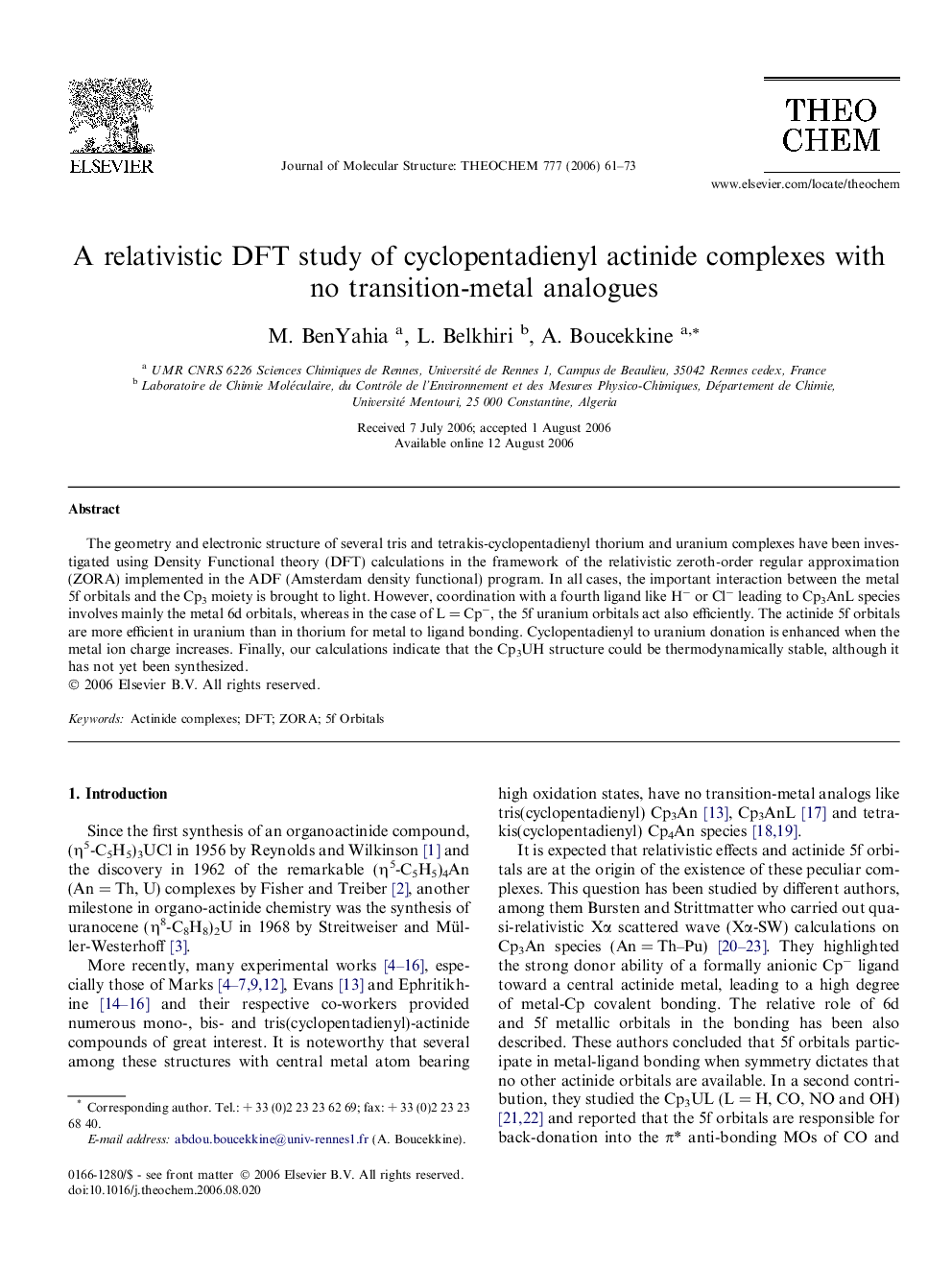| Article ID | Journal | Published Year | Pages | File Type |
|---|---|---|---|---|
| 5418209 | Journal of Molecular Structure: THEOCHEM | 2006 | 13 Pages |
Abstract
The geometry and electronic structure of several tris and tetrakis-cyclopentadienyl thorium and uranium complexes have been investigated using Density Functional theory (DFT) calculations in the framework of the relativistic zeroth-order regular approximation (ZORA) implemented in the ADF (Amsterdam density functional) program. In all cases, the important interaction between the metal 5f orbitals and the Cp3 moiety is brought to light. However, coordination with a fourth ligand like Hâ or Clâ leading to Cp3AnL species involves mainly the metal 6d orbitals, whereas in the case of LÂ =Â Cpâ, the 5f uranium orbitals act also efficiently. The actinide 5f orbitals are more efficient in uranium than in thorium for metal to ligand bonding. Cyclopentadienyl to uranium donation is enhanced when the metal ion charge increases. Finally, our calculations indicate that the Cp3UH structure could be thermodynamically stable, although it has not yet been synthesized.
Keywords
Related Topics
Physical Sciences and Engineering
Chemistry
Physical and Theoretical Chemistry
Authors
M. BenYahia, L. Belkhiri, A. Boucekkine,
